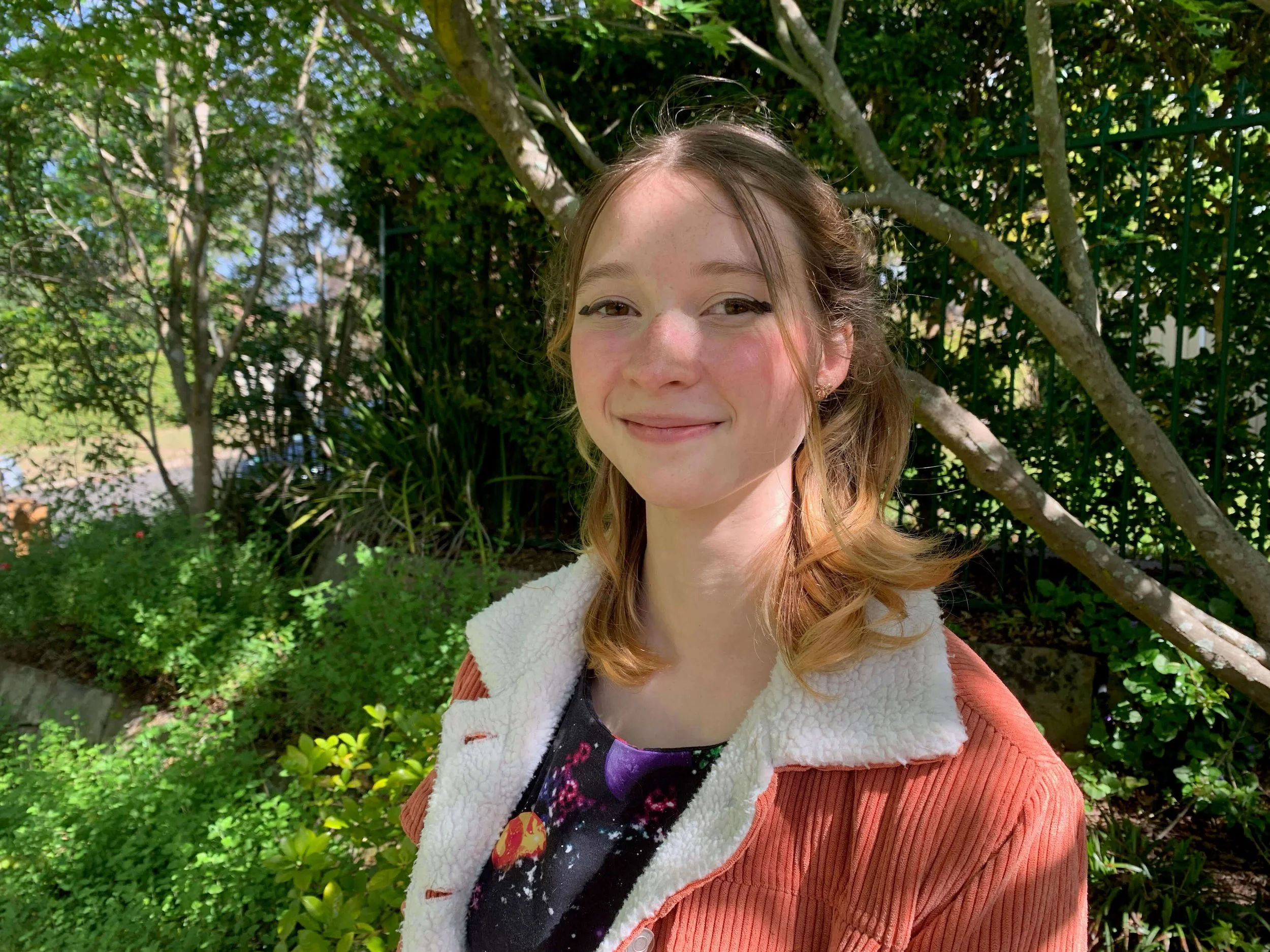How to ask your principal to add climate education to your curriculum
18-year-old Australian climate activist Liv Heaton attends a climate strike. (Courtesy of Liv Heaton)
18-year-old Australian climate activist Liv Heaton shares a template you can use to write to your school and demand quality climate education.
When I was a student, I travelled to many different environments around Australia with my school — from the Snowy Mountains and the Central Desert to the far northern tropics and small offshore islands. During these trips, I learned about the ways climate change was impacting my country, from severe drought to rising sea levels. I also learned the reason why my country was so affected by climate change: because Australia’s energy sector burns fossil fuels at alarming rates and the federal government has a poor climate policy.
As I got older, the impact of climate change on the world around me was becoming more apparent. During the Black Summer bushfires of 2019–2020, which were sparked by the hot and dry conditions of a long drought, thousands of people lost their homes and three billion animals died. Millions of hectares of wilderness were razed. It was the worst New South Wales bushfire season on record. My school closed for days, the sky turned red and ash carpeted everything like grey snow. Many people had asthma attacks and respiratory illnesses from breathing in so much smoke and ash.
At the height of the Black Summer bushfires, I decided to join School Strike for Climate Australia, one of the leading climate organisations in Australia. I’d had enough of the inaction of national leaders who let drought and bushfires run rampant with barely a scrap of support for the victims. The climate education I received at my Australian Steiner school — which is alternative schooling focused on holistic learning — had helped me understand the risks, solutions and disparities of effects of the climate crisis and primed me to take what I learned in the classroom and apply it in real life.
“The climate education I received at my Australian Steiner school — which is alternative schooling focused on holistic learning — had helped me understand the risks, solutions and disparities of effects of the climate crisis and primed me to take what I learned in the classroom and apply it in real life,” explains Liv. (Courtesy of Liv Heaton)
I organised my first protest in Western Sydney for the council to call for a climate emergency as the area is disproportionately affected by climate change, with frequent 45°C days in the summer. The protest attracted local attention and we received a lot of signatures for our petition calling on the council to declare a climate emergency. However, just a few days after this protest, COVID-19 hit. Protesting was limited to online action, and it seemed that all the traction we had gathered had been lost. As the coronavirus spread in Australia and around the world, many people no longer had the space to think about climate change.
My exasperation with the Australian government’s poor bushfire preventative measures, recovery strategy and support for those affected had to be channelled elsewhere. So I started thinking of alternative power solutions for everyday objects. As someone who is passionate about engineering, thinking about how to make modern technology sustainable has become a habit. Limiting energy consumption and using recyclable materials seems achievable in nearly every aspect of our lives. Learning about alternate energy solutions in school inspired me to attempt to implement renewable energy in aspects of my life.
I have worn a hearing aid since I was 8 years old, and I discard the batteries every two weeks. I have used over 200 batteries so far, and at this rate, I will use over 2,000 over the course of my entire life. This is not only bad for the environment — the batteries are small enough for animals such as birds to eat and batteries sent to landfills leak toxic substances — but expensive for hearing aid users. So, in late 2020, I started developing a solar-powered hearing aid. I designed it so that it would be accessible to those living in remote communities without batteries readily available and those who cannot afford to buy hearing aids. I plan to have the hearing aid design remain open source so that others can access it for free.
Learning about renewable energy and disparities of climate change through the school curriculum drove me to create something that could be powered by the sun and help low-income and remote populations access hearing aids. Studying the causes and outcomes of climate change in school instilled in me a deeper understanding of how and why climate change is happening — and the role I could play in stopping it. I want every student to be able to harness their potential to create a renewable and eco-conscious future.
“Studying the causes and outcomes of climate change in school instilled in me a deeper understanding of how and why climate change is happening — and the role I could play in stopping it.”
That’s why I developed an email template you can use to ask your school administration to implement quality climate education at your school. Think about the impact just one individual can have by developing a new eco-friendly technology or writing to political leaders to change their climate policies. What would happen if 100 individuals acted together? Or 10,000?
The fight against climate change can be won with enough people, but education comes first. You have to know what you're fighting in order to create the most efficient strategies to dismantle it.
Dear [your principal or school administrator’s name],
My name is [your name], I am a student at [your school’s name] in [your class or grade]. I am writing to request a climate education curriculum at [school].
I believe that climate education is vital to understanding the causes, effects and solutions surrounding climate change. Environmental health is one of the most pressing issues of our time and, with your help, education will enable my generation to secure a better future for our planet. Environmental science disciplines also offer an increasing array of careers that are attracting young people interested in science, engineering and communications.
A quality climate education curriculum should include:
Teaching students the sources of climate change, including the role of the fossil fuel industry in perpetuating the climate crisis, the scientific explanation of human-induced emissions and government policies allowing for excessive environmental harm;
Evaluating how the climate crisis disproportionately affects girls and women;
Highlighting the ways climate change has and will affect us including the effect of high-income countries’ waste on low-income countries, socio-economic inequalities exacerbated by the climate crisis and the decrease of biodiversity;
Ensuring that girls are able to study STEM on equal terms with boys;
Enabling students to discuss and take action on climate change outside of the classroom through clubs and extracurricular activities; and
Discussing solutions to combat the negative effects of climate change, including renewable and recycling technologies, Indigenous involvement in environmental care and government policy changes.
Please consider implementing a climate education course at our school for the benefit of generations to come.
Yours sincerely,
[Your name]
 Read more
Read more











